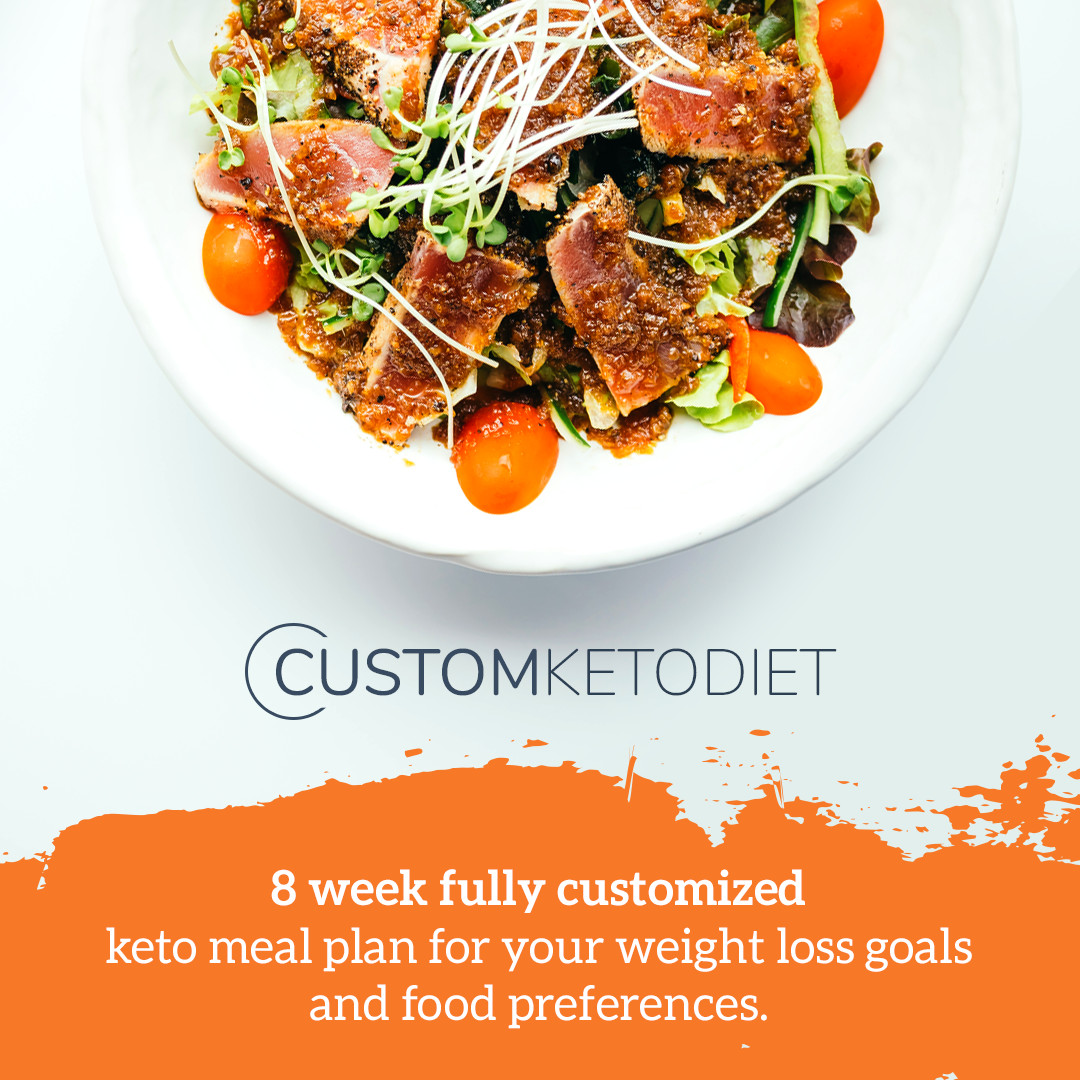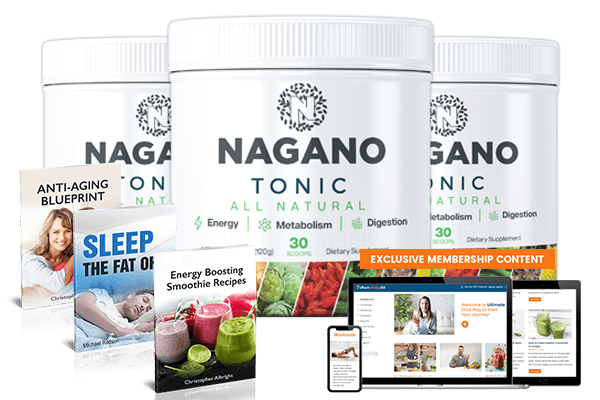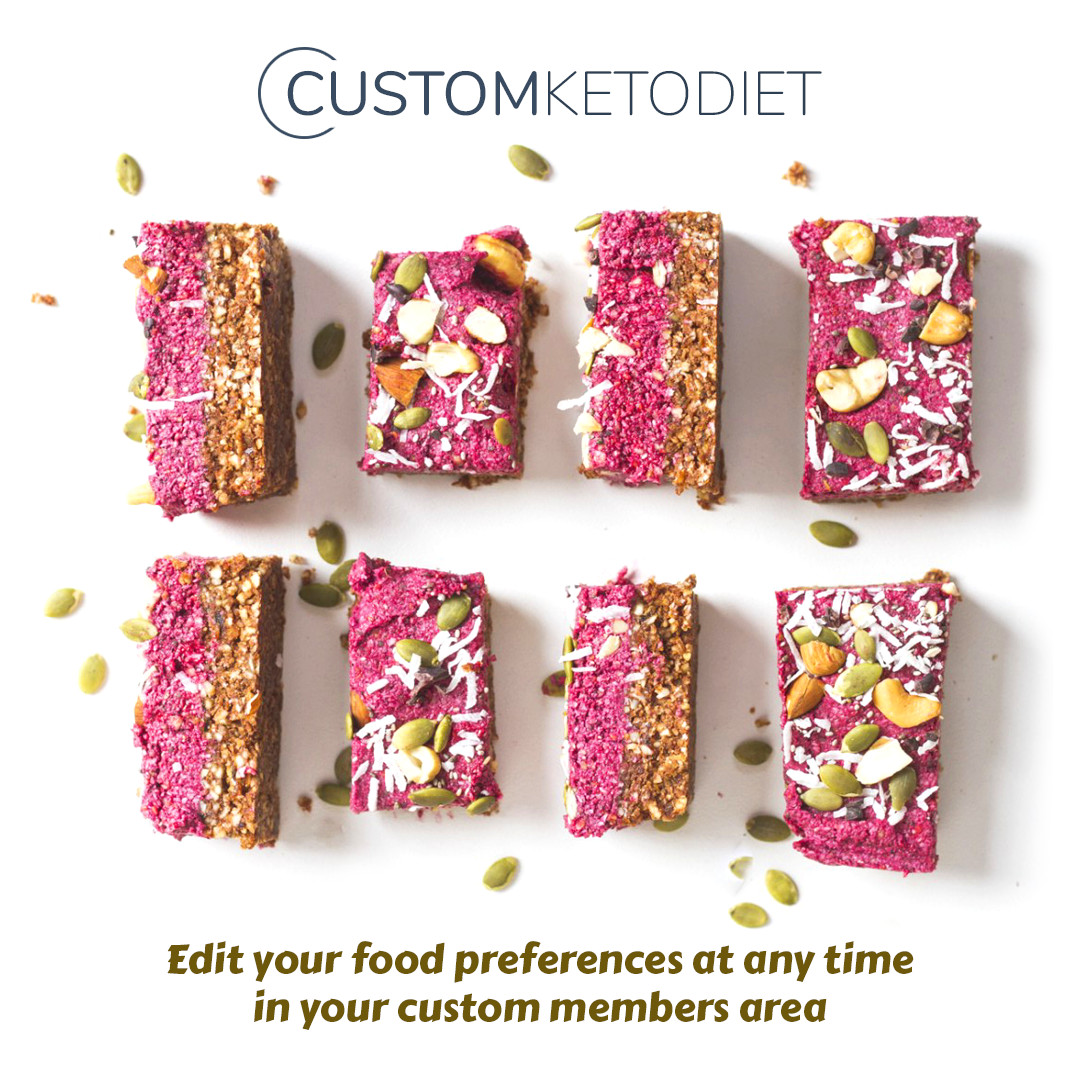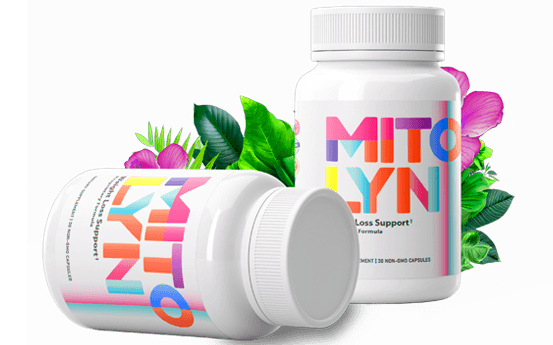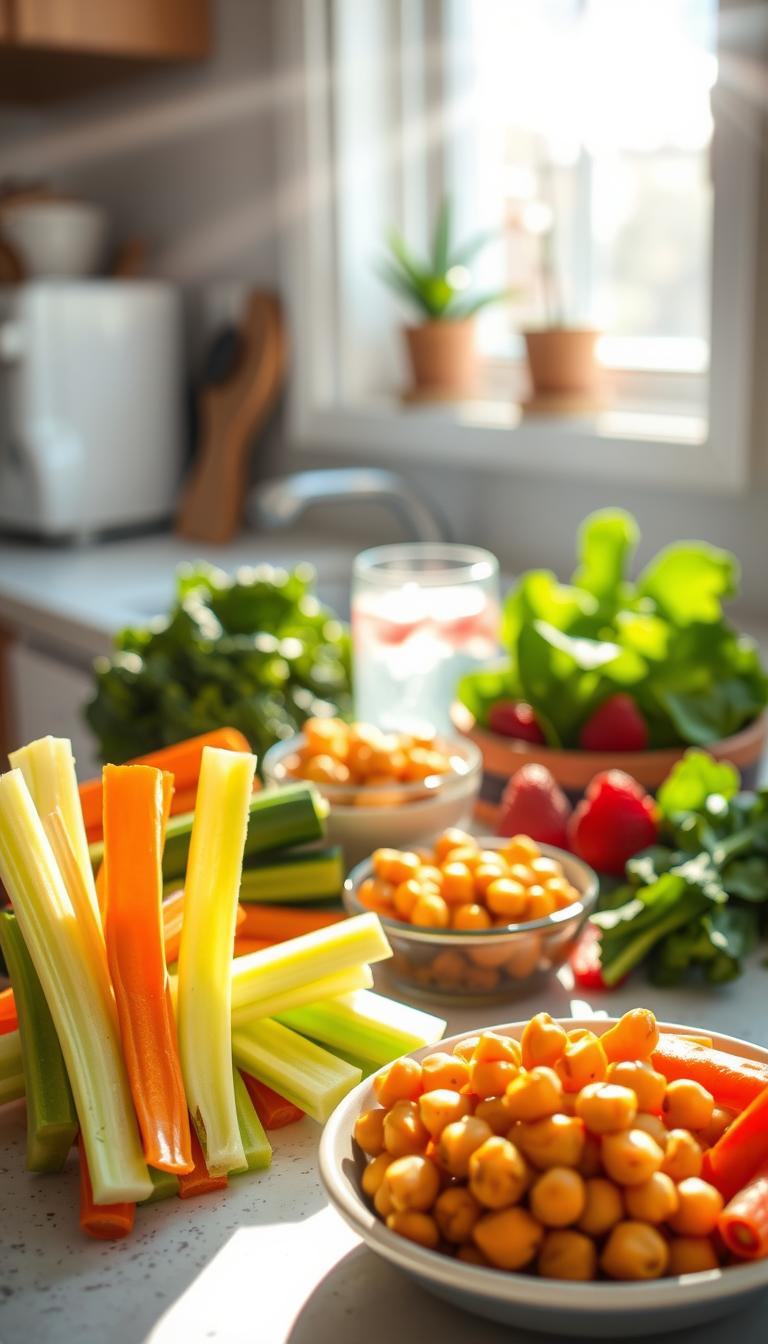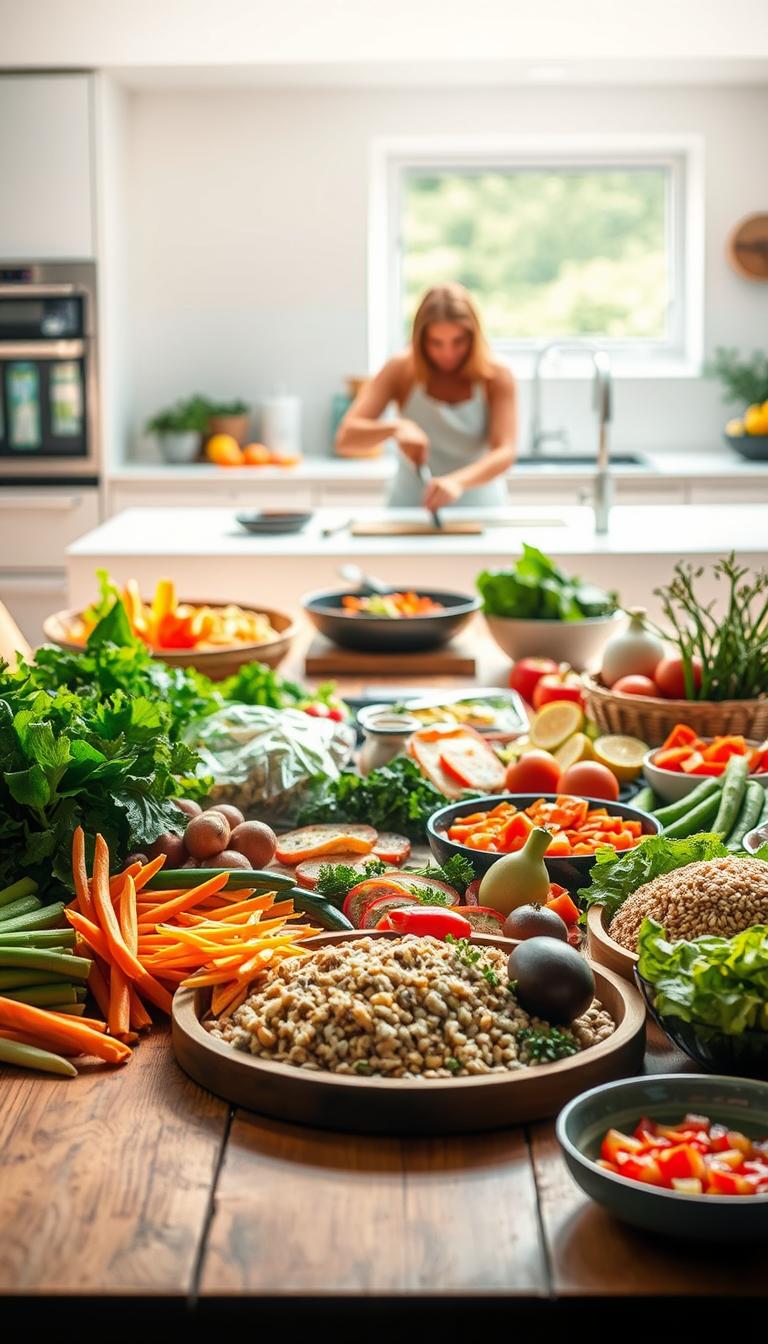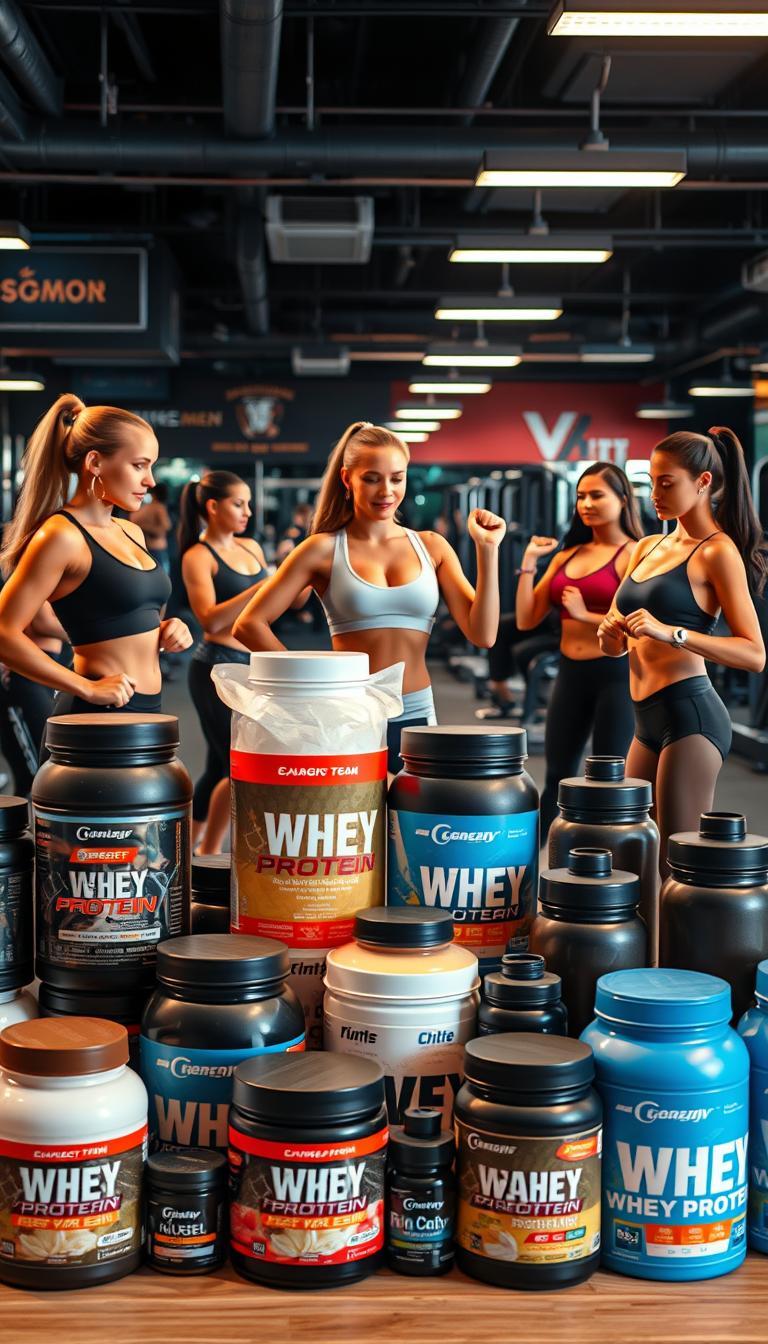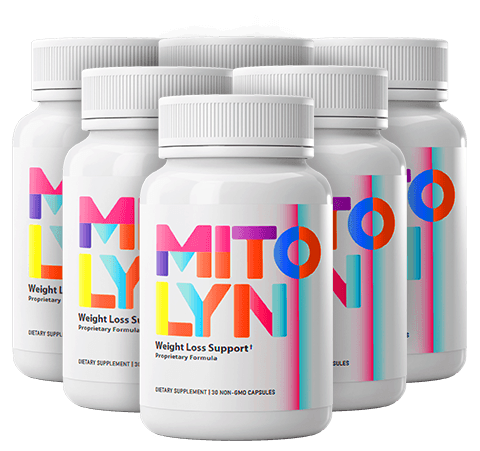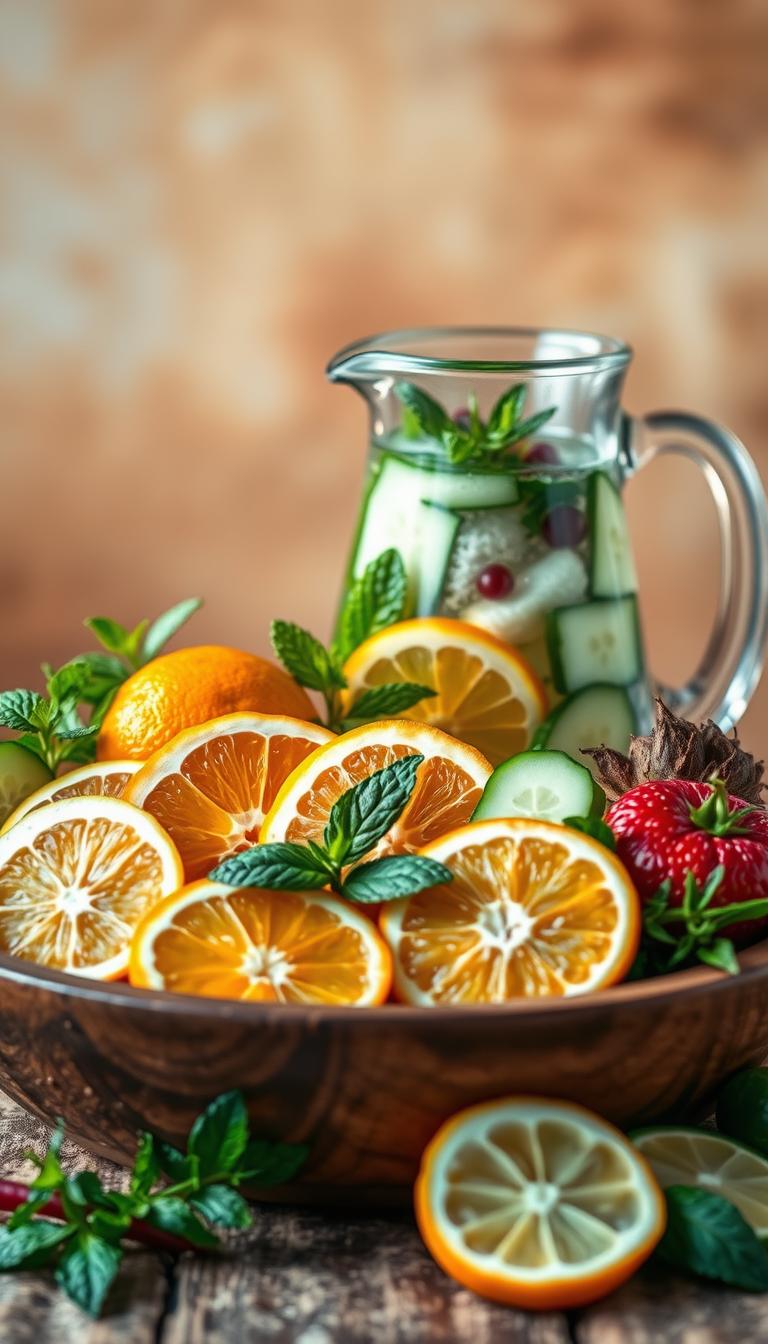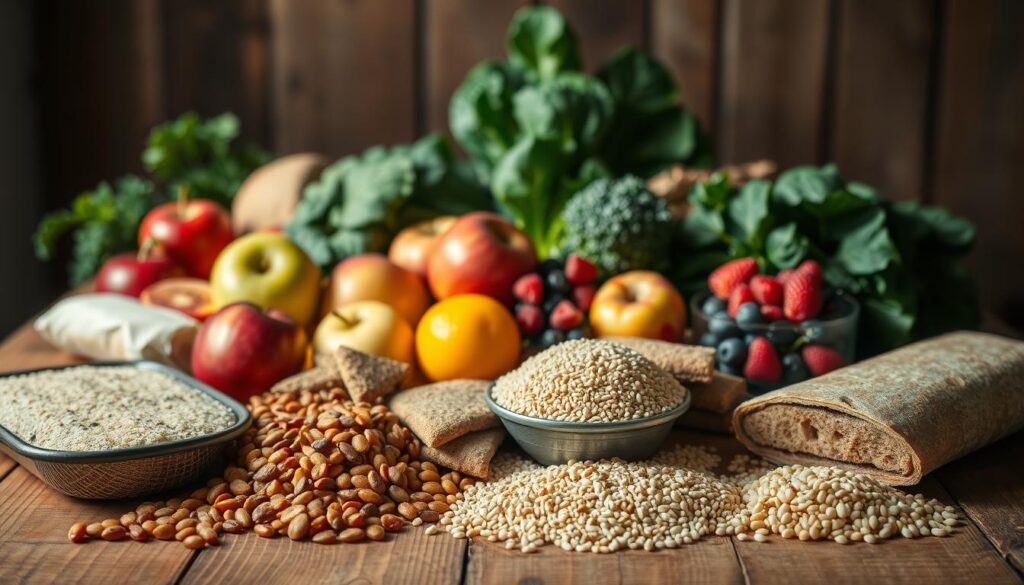
Ever feel sluggish, bloated, or just not quite “right” no matter how much you eat? Chances are your body is missing a key nutrient: fiber. The average American eats only 10-15 grams daily, half what the USDA recommends. Imagine the difference 25-38 grams could make for your energy, digestion, and long-term health.
Think fiber-rich foods are bland or hard to find? Think again. From creamy avocados to crunchy popcorn, this guide reveals everyday foods that pack serious fiber power. These aren’t just rules—they’re tools to help you feel lighter, stronger, and more vibrant.
Let’s get real: boosting fiber doesn’t mean drastic changes. Swapping white rice for quinoa or adding beans to salads can close that 15-gram gap. Every bite counts, and every meal can become a step toward better gut health, clearer skin, and steady energy.
Key Takeaways
- Most Americans eat only 15g of fiber daily—half the USDA’s recommendation.
- High fiber foods like chia seeds (10g/oz) and lentils (15.5g/cup) make it easy to close the gap.
- Increasing fiber can improve gut health in just 5 days.
- Women need 23-28g daily, men 30-38g—this guide shows how to hit targets effortlessly.
- Fiber-rich foods like artichokes (7g/cup) and bran (14.5g/cup) support digestion, heart health, and weight management.
Why Fiber Is Essential for Your Overall Health
Your body needs fiber to stay healthy. A high fiber diet helps prevent heart disease, diabetes, and some cancers. It also helps with weight control. But, only 5% of men and 9% of women in the U.S. get enough fiber each day. Let’s explore why fiber is so important.
Understanding Soluble vs. Insoluble Fiber
- Soluble fiber: It absorbs water, making a gel that slows digestion. You can find it in oats, beans, and apples. It helps control blood sugar and cholesterol.
- Insoluble fiber: It makes stool bulkier, helping with constipation. You can find it in whole grains, carrots, and nuts.
How Much Fiber Do You Really Need Daily?
Most adults need 21-38 grams of fiber each day. This depends on your age and gender. Here’s a simple guide:
- Men under 50: 38 grams
- Men 51+: 30 grams
- Women under 50: 25 grams
- Women 51+: 21 grams
Most Americans only get 15 grams of fiber. Eating more fiber slowly can help avoid bloating or stomach pain.
The Connection Between Fiber and Gut Health
“Fiber feeds your gut’s “good” bacteria, strengthening immunity and digestion,” says the National Academy of Medicine.
Soluble fiber helps your gut’s good bacteria grow. This helps your body fight off sickness and digest food better. Eating foods high in fiber, like berries, lentils, and whole grains, is good for your health. It lowers the risk of colorectal cancer and keeps blood sugar stable.
The Best High Fiber Foods to Add to Your Diet
When you’re planning your meals, look for best high fiber foods. These should meet or exceed the FDA’s 5-gram-per-serving guideline. Even small amounts help you reach your daily goal.
Men need 38g, women 25g of fiber each day. You can mix these foods into your meals. This way, you enjoy tasty choices while meeting your fiber needs.

| Food | Serving Size | Fiber (g) |
|---|---|---|
| Split Peas (boiled) | 1 cup | 16 |
| Lentils (boiled) | 1 cup | 15.5 |
| Black Beans (boiled) | 1 cup | 15 |
| Chia Seeds | 1 oz | 9.75 |
| Raspberries | 1 cup | 8 |
| Avocado | ½ medium | 5 |
| Quinoa (cooked) | 1 cup | 5 |
| Artichoke (raw) | 1 globe | 6.9 |
Pair foods for a good mix. For example, try 1 cup raspberries (8g), ½ cup oatmeal (5g), and 3 tbsp almonds (3g) for breakfast. This gives you 13.5g of fiber.
Drink at least 2 liters of water a day to help with digestion. Making small changes can help a lot. Try swapping white rice for quinoa or adding beans to your soups.
- Add lentils to soups for 15.5g/cup
- Snack on chia seeds (9.75g/oz)
- Choose whole fruits like pears (6g) over juice
Most Americans only get 15g of fiber a day. Start by making one small change each week. Choose a high fiber foods option instead of something low in fiber. These small changes can greatly improve your gut health and energy levels!
Fantastic Fiber-Rich Fruits to Enjoy Year-Round
Boost your fiber intake with nature’s sweetest offerings. High fiber fruits like berries, tropical treats, and dried options make it easy to meet your daily goals while savoring flavor-packed choices.
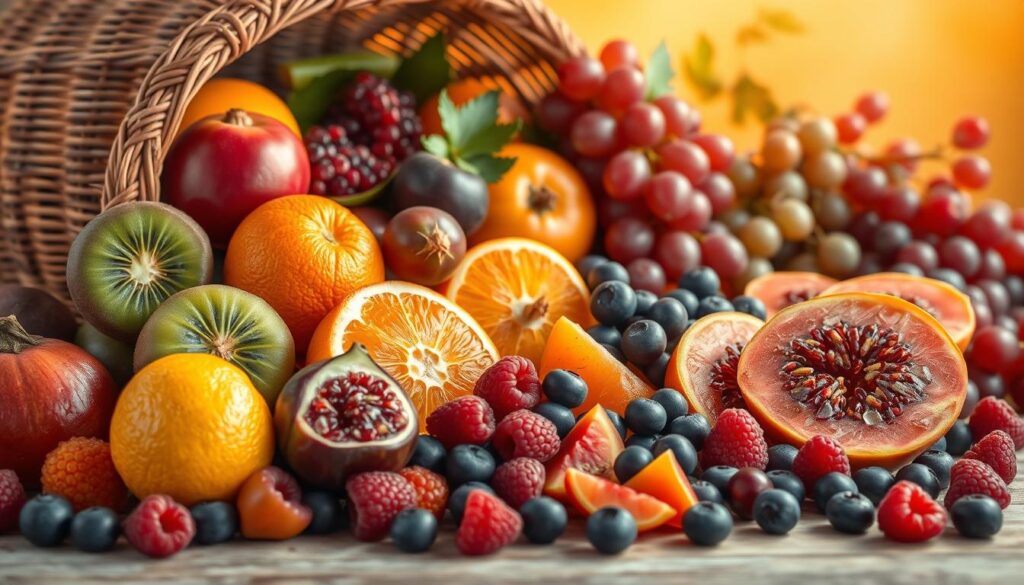
Berries: Small Packages with Big Fiber Benefits
Raspberries and blackberries are fiber dynamos. A one-cup serving of raspberries delivers 8 grams, while blackberries clock in at 7.5 grams. Add strawberries (3 grams per cup) to yogurt or oatmeal for a vitamin C and fiber boost. Frozen berries work just as well as fresh!
Tropical Fruits That Pack a Fiber Punch
Reach for fiber-rich foods like guava (9 grams per cup) or mangoes. A single guava offers 5 grams alone. Starfruit and passionfruit also shine, with 4 grams per cup. Toss tropical chunks into smoothies bowls for a tropical twist.
Dried Fruits: Convenient High Fiber Options
Snack on dried figs (1.9g per ¼ cup) or medjool dates (1.5g per date). Their concentrated sweetness makes them perfect for trail mixes or energy balls. Just watch portions to manage sugar intake!
| Fruit | Fiber (per serving) | Tip |
|---|---|---|
| Raspberries | 8g/cup | Top salads or blend into smoothies |
| Guava | 9g/cup | Pair with citrus for a tangy balance |
| Dried figs | 1.9g/¼ cup | Add to oatmeal or trail mix |
The Academy of Nutrition and Dietetics recommends choosing fruits with visible skins, as peels often hold extra fiber.
Vegetables That Boost Your Fiber Intake Significantly
Most Americans don’t get enough fiber. High fiber vegetables like broccoli and Brussels sprouts can help. A cup of cooked collard greens has 6 grams of fiber, which is over 20% of what you need every day. These veggies are low in calories but packed with nutrients.
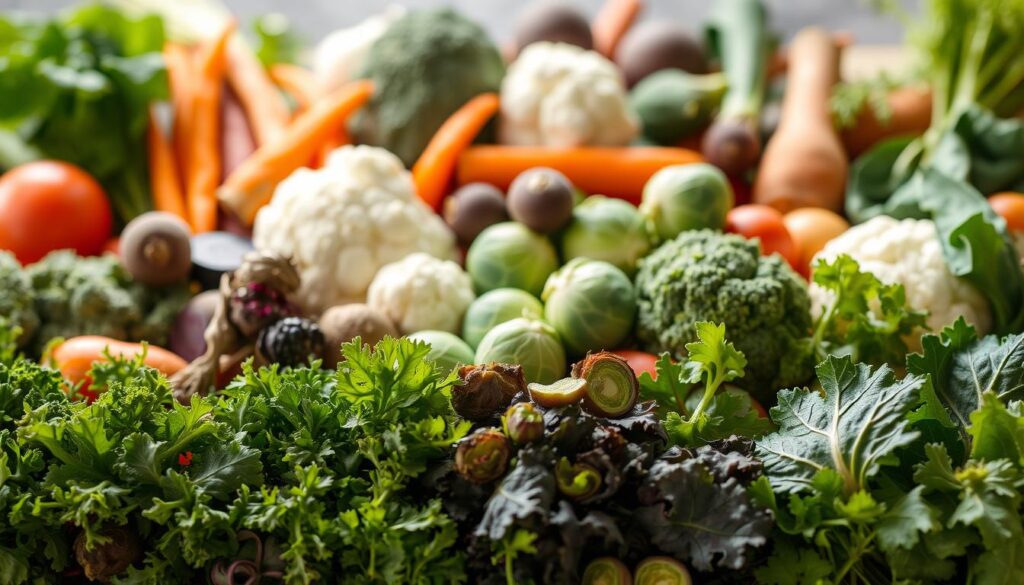
Only 10% of adults eat enough vegetables daily. Adding these fiber-rich picks can make a big difference.
Here are top choices:
- Broccoli (cooked): 2.5g/cup
- Brussels sprouts (cooked): 6g/cup
- Collard greens (cooked): 6g/cup
- Carrots (cooked:5g/cup
- Cauliflower (cooked:5g/cup
| Vegetable | Fiber (g/cup) | Benefits |
|---|---|---|
| Broccoli | 2.5g | Rich in sulforaphane |
| Brussels Sprouts | 6g | Cancer-fighting compounds |
| Collard Greens | 6g | Vitamins A & C |
| Carrots | 5g | Beta carotene for eyesight |
How to Increase Fiber Intake:
- Roast Brussels sprouts as a side dish.
- Blend collard greens into smoothies.
- Add broccoli to omelets or pasta dishes.
- Snack on carrot sticks with hummus.
Adding these high fiber vegetables to your meals can help you meet your daily fiber goals. Try swapping regular rice with cauliflower rice to boost fiber and cut carbs. Even small changes can make a big difference!
Whole Grains and Legumes: Fiber Powerhouses for Every Meal
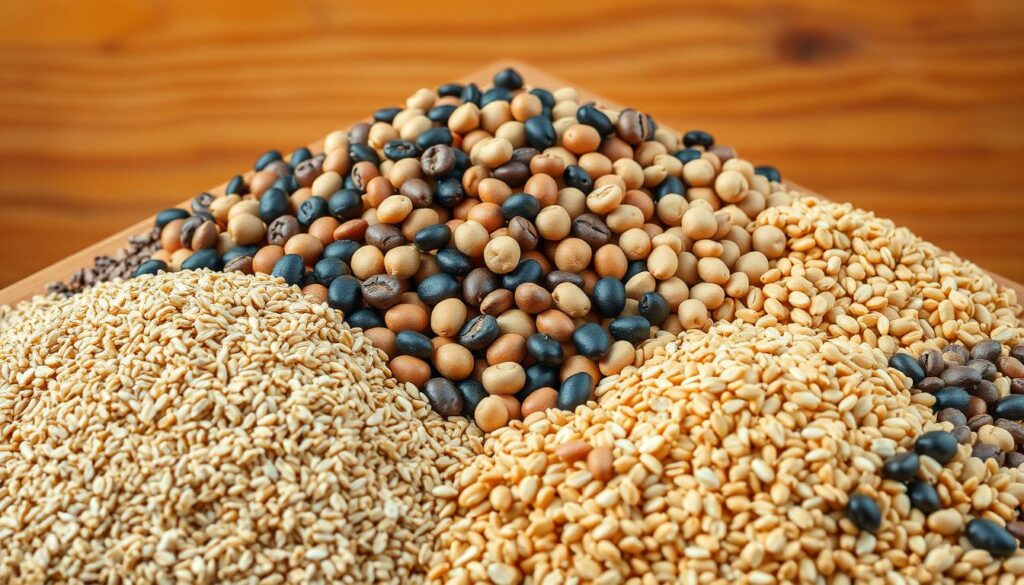
Boost your daily fiber intake by adding whole grains and legumes to every meal. These fiber-rich foods give you lasting energy and help your heart. Here are some top picks to help you reach the daily goal of 25–35g of fiber.
Ancient Grains with Impressive Fiber Content
Try ancient grains like quinoa, spelt, and barley to mix up your meals. These foods are full of nutrients, fiber, and protein:
| Grain | Fiber Per Cooked Cup |
|---|---|
| Quinoa | 5g |
| Spelt | 7.5g |
| Barley | 6g |
Beans and Lentils: Versatile Fiber Champions
- 1 cup cooked lentils: 18g fiber
- Black beans or pinto beans: 15g per cup
- Edamame (½ cup): 4g) adds protein and fiber to salads
Soak dried beans overnight for easier digestion. Pair them with whole grains for a complete protein profile.
Whole Grain Breads and Pastas
Switch to whole wheat pasta (7g/cup) or 100% whole grain breads. Look for the Whole Grain Stamp to ensure it’s real. Try sorghum flour for gluten-free baking or bulgur in salads for a nutty crunch.
“Whole grains reduce heart disease risk by lowering LDL cholesterol,” says the American Heart Association.
Pair legumes with ancient grains for balanced meals. Add black beans to salads, toss quinoa with roasted veggies, or snack on roasted chickpeas (12g fiber per cup cooked). Every bite brings you closer to your daily goal while keeping meals flavorful and satisfying.
Nuts and Seeds: Small but Mighty Fiber Sources
Looking for high fiber snacks that are also tasty and nutritious? Nuts and seeds are perfect. They’re small but full of fiber and protein. This makes them great for quick snacks or adding to meals. 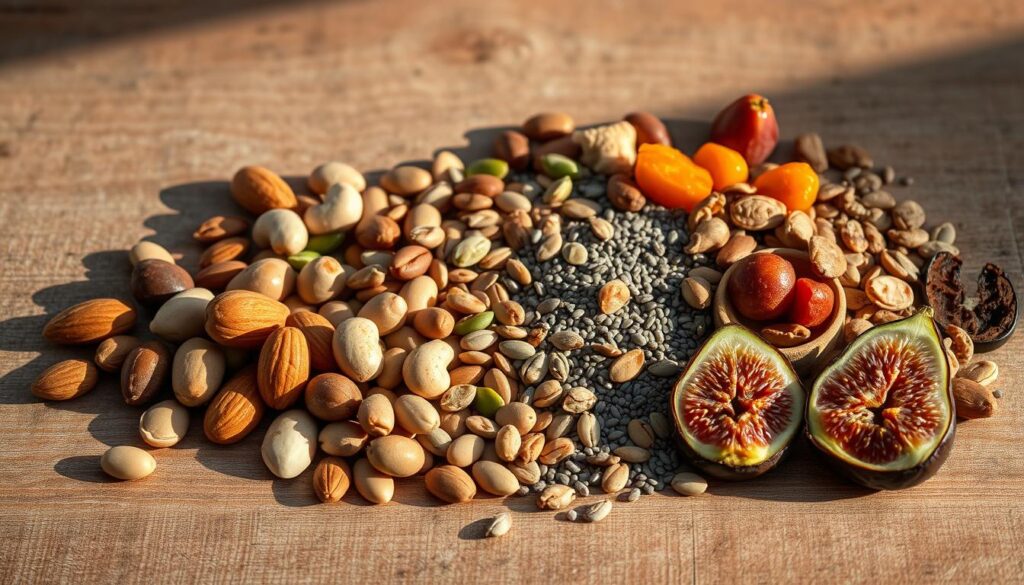
Chia, Flax, and Hemp Seeds: Tiny Fiber Superstars
Chia seeds add a nutty taste to smoothies and yogurt. Sprinkle them on food for a fiber boost. Two tablespoons of chia seeds have 10g of fiber.
Flaxseeds, when ground, have 11.5g of fiber per ¼ cup. They also have omega-3s for heart health. Hemp seeds have 9g protein and 9g fiber per 3 tablespoons. They’re great in oatmeal or salads.
Nutrient-Dense Nuts That Deliver on Fiber
Almonds have 6g fiber per ½ cup. Hazelnuts have 3.3g fiber per ¼ cup. Mix them into yogurt or enjoy as a snack.
Sunflower seeds have 11.5g fiber per ¼ cup. Pistachios have 3g per ounce. They’re easy to take on the go.
| Food | Serving Size | Fiber (g) | Protein (g) |
|---|---|---|---|
| Chia Seeds | 2 tbsp | 10 | 4 |
| Flax Seeds | ¼ cup | 11.5 | 5 |
| Almonds | ½ cup | 6 | 6 |
| Sunflower Seeds | ¼ cup | 11.5 | 6 |
Make your own trail mix or add to baked goods. Store your favorite mix in small portions. Mix nuts with dried fruit or dark chocolate for a tasty snack under 200 calories.
- Blend chia into smoothies for a thick, fiber-rich drink.
- Top salads with hemp seeds for a protein and fiber boost.
- Snack on roasted almonds or hazelnuts for a crunchy fix.
Pair these with yogurt or add to energy balls. They’re high fiber snacks that fuel your day. Every bite helps you reach your daily 25–35g goal.
Quick and Easy High Fiber Snacks for Busy Days
When life gets busy, high fiber snacks keep your diet on track. They offer nutrition and convenience. This helps you easily reach the daily fiber goal of 28–34g.
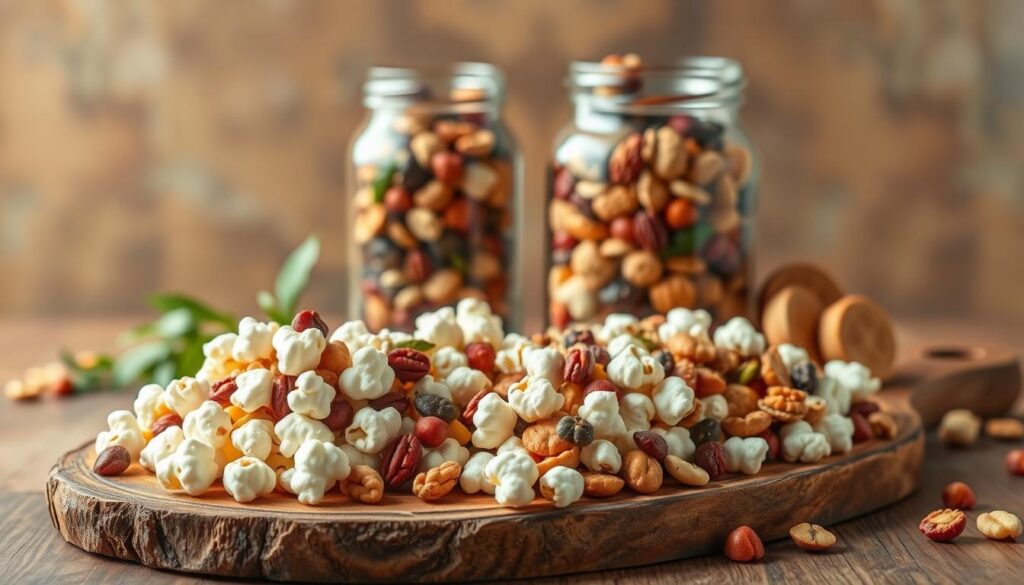
Air-popped popcorn is a great choice. It has 17g of fiber in just 1 cup. Avoid store-bought popcorn with salt or sugar. Instead, add nutritional yeast for a cheesy taste or chili powder for spice.
Always choose plain kernels to pop at home. This way, you avoid added sugars.
- Apple slices + 2 tbsp almond butter: 4g fiber
- Celery sticks + 2 tbsp hummus: 3g fiber
- Trail mix (mix walnuts, raisins, sunflower seeds): 3g fiber per ¼ cup
- No-bake energy balls (oats + chia seeds + dates): 3g fiber each
Prep these snacks ahead of time. Store them in airtight containers for easy access. Swap chips for roasted chickpeas (3g fiber per ½ cup) or keep roasted edamame handy (8g fiber per serving).
When buying snacks, choose ones with at least 3g fiber per serving. Look for brands like KIND Bars or RXBAR. Pair these with a hard-boiled egg or Greek yogurt for a balanced snack.
Small changes can make a big difference. Swap a cookie for popcorn or add chia seeds to yogurt. These simple steps can help you meet your fiber goals easily.
Creative Ways to Incorporate More Fiber into Your Meals
Adding fiber-rich foods to meals is easy. These simple swaps make everyday dishes fiber powerhouses. This makes how to increase fiber intake both easy and tasty.
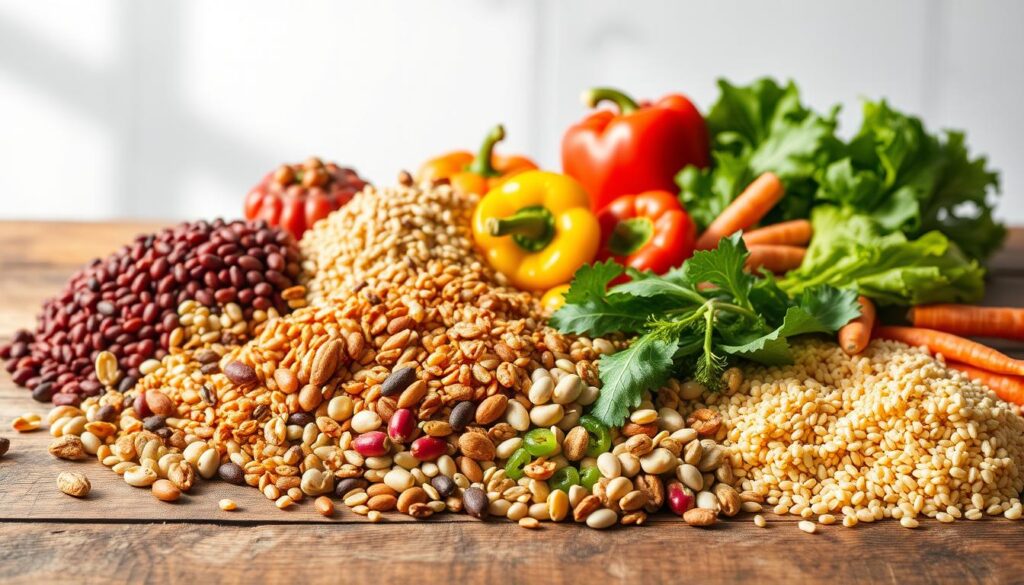
Breakfast Boosters: Start Your Day with Fiber
Try overnight oats with berries or chia seeds for 10g fiber. Blend spinach into smoothies or make whole-wheat pancakes with mashed bananas. Mix ground flaxseed into yogurt for extra fiber.
- Overnight oats: Combine rolled oats, almond milk, and a banana for 6g fiber in minutes.
- Green smoothies: Spinach + banana + almond butter = 5g fiber.
- Whole-grain toast topped with avocado and a poached egg (4g fiber).
Dinner Makeovers: Simple Swaps for More Fiber
“Lentils make a perfect taco filling—they’re packed with fiber and protein,” says dietitian Cassandro Caspero.
Swap white rice for cooked Trader Joe’s 10-minute barley (6g fiber per ½ cup). Mix black beans into pasta dishes. Roast veggies like Brussels sprouts (4g per cup) as a side. Try these swaps:
- Swap ½ the pasta for lentils in lasagna.
- Add chickpeas to salads or soups for 3g fiber per ¼ cup.
- Use zucchini noodles instead of regular pasta (2g fiber per cup).
Desserts That Secretly Contain Fiber
Enjoy treats that are good for you:
- Black bean brownies (3g fiber per serving).
- Apple slices with almond butter (2g fiber per tbsp).
- Chia seed pudding with raspberries (8g fiber per cup).
Small changes add up! Every bite counts toward your daily 25-38g goal. Try these ideas for better digestion and energy. Enjoy the flavors while boosting your health.
Potential Side Effects of Increasing Fiber Too Quickly
Jumping straight into a high fiber diet might not be good. It can cause bloating, gas, or cramps. This is because your gut needs time to adjust.
Even though a high fiber diet is good for digestion and health, sudden changes can be uncomfortable.
“Increase your fiber intake gradually over several weeks to alleviate any bouts of abdominal discomfort,” advises nutritionist Farrell Allen. “Be kind and give your body time to adjust, and drink plenty of water to soften the fiber as it moves through the GI tract.”

How to Avoid Digestive Discomfort When Boosting Fiber
- Gradually add 2-3 grams of fiber weekly until reaching your goal.
- Pair fiber with 8-10 cups of water daily to prevent constipation.
- Opt for cooked beans and sprouted grains to reduce gas production.
- Track your intake using a food journal to monitor progress safely.
When to Consult a Healthcare Provider About Fiber Intake
Most symptoms fade within a few weeks, but seek medical advice if you experience:
- Severe abdominal pain lasting more than 24 hours
- Bowel changes like unexplained weight loss or blood in stools
- Ongoing nausea or vomiting
| Symptom | Adjustment Strategy |
|---|---|
| Bloating | Reduce intake by 5g/day and reintroduce slowly |
| Constipation | Increase water intake by 25% for 3 days |
| Gas | Try over-the-counter enzymes like Beano or digestive aids |
Follow the CDC’s guidelines: adults need 22-34g fiber daily. Sudden jumps beyond 30g weekly can cause problems. Always talk to your doctor if you have Crohn’s disease or kidney stones before increasing intake.
Special Considerations: High Fiber Foods for Different Dietary Needs
Adapting a high fiber diet to your lifestyle doesn’t mean sacrificing variety. Let’s explore how to choose the best high fiber foods while meeting unique needs:
For plant-based diets, focus on legumes like lentils and chickpeas. Add quinoa or brown rice for protein and fiber. Oats and chia seeds are good for blood sugar control.
Going gluten-free? Try gluten-free grains like amaranth or buckwheat. They are rich in fiber and magnesium. Look for whole-grain options on labels.
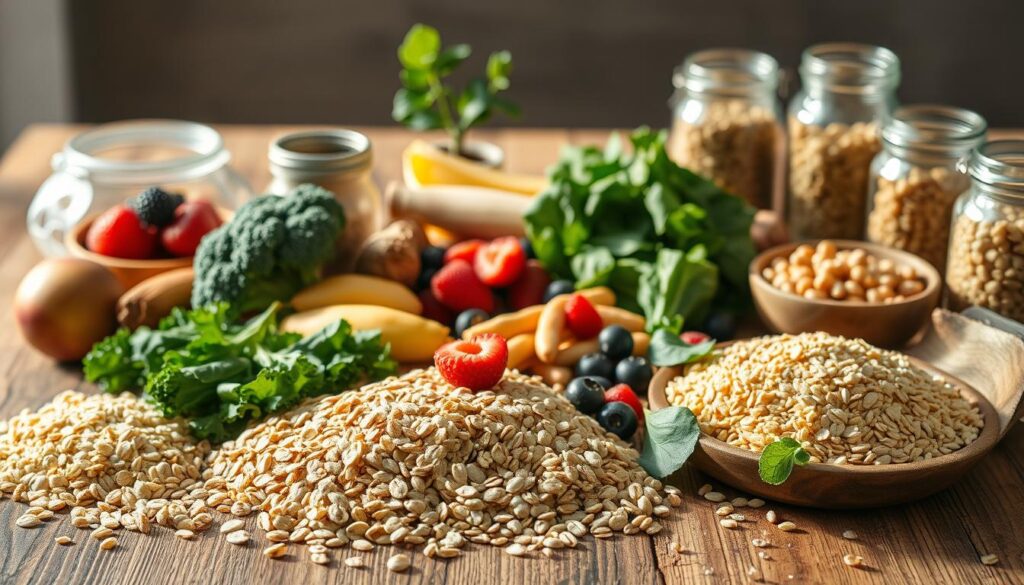
Diabetes management benefits from soluble fiber in beans and berries. These slow down sugar absorption, keeping levels stable. Choose vegetables like artichokes or avocados for fiber and healthy fats.
Low-carb diets can still include fiber! Almonds, flaxseeds, and broccoli are good choices. Aim for 25-30g daily from nuts, leafy greens, and avocado.
Those with IBS should start with soluble fiber sources like apples or oats. Then, add insoluble fiber like bran slowly. Cook veggies to reduce irritation.
Need extra help? Talk to a dietitian. They can create a plan that balances fiber with your goals. Start with small changes, like swapping white rice for farro, to add fiber without overwhelming your system.
Conclusion: Embracing a High Fiber Lifestyle for Long-Term Wellness
Starting a high fiber diet is more than a quick fix. It’s a long-term health plan. The benefits of high fiber diet help prevent heart disease, diabetes, and some cancers. Making small changes can change your eating habits easily.
Adding more fiber is simple. Choose whole grains over white ones, add berries to oatmeal, or sprinkle chia seeds on salads. Events like Bakersfield College’s Blue Zones Food Policy Summit show how education and teamwork help. They make eating fiber-rich foods easy and lasting.
Don’t worry about being perfect. Just keep moving forward. Drink lots of water and stay active for the best results. Every choice you make brings you closer to a healthy life. Just like Porterville College’s baseball team, small steps lead to big wins.
As you try new fiber-rich foods, keep your goals in mind. Celebrate small victories, like using whole grain bread or adding avocado. With help from workshops and Blue Zones, you can make lasting changes. Your health journey is unique, so try new things and let fiber be your health base.

